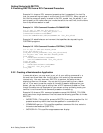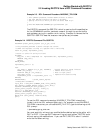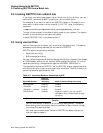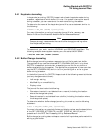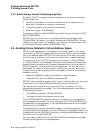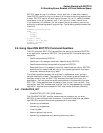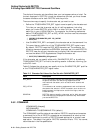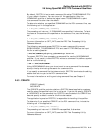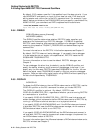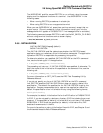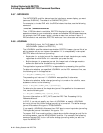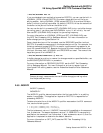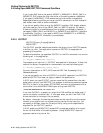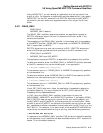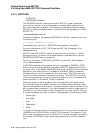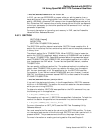Getting Started with DECTPU
2.6 Using OpenVMS EDIT/TPU Command Qualifiers
By default, EVE creates a new file if the specified input file does not exist. If you
use /NOCREATE and specify an input file that does not exist, EVE aborts the
editing session and returns you to the DCL command level. For example, if your
default device and directory are DISK$:[USER] and you specify a nonexistent file,
NEWFILE.DAT, your command and EVE’s response would be as follows:
$ EDIT/TPU/NOCREATE newfile.dat
Input file does not exist: DISK$:[USER]NEWFILE.DAT;
2.6.4 /DEBUG
/DEBUG[[=debug_source_filename]]
/NODEBUG (default)
The /DEBUG qualifier determines whether DECTPU loads, compiles, and
executes a file implementing a DECTPU debugger. If /DEBUG is specified,
DECTPU reads, compiles, and executes the contents of a debugger file before
executing the procedure TPU$INIT_PROCEDURE and before executing the
command file.
For more information on the DECTPU initialization sequence, see Chapter 5.
By default, DECTPU does not load a debugger. If you specify that a debugger
is to be loaded but do not supply a file specification, DECTPU loads the file
SYS$SHARE:TPU$DEBUG.TPU.
For more information on how to use the default DECTPU debugger, see
Chapter 5.
To use a debugger file other than the default, use the /DEBUG qualifier and
specify the device, directory, and file name of the debugger to be used. If you
specify only the file name, DECTPU searches SYS$SHARE for the file. You can
define the logical name TPU$DEBUG to specify a file that contains a debugger
program. Once you define this logical name, using /DEBUG without specifying a
file calls the file specified by TPU$DEBUG.
2.6.5 /DISPLAY
/NODISPLAY
To choose the DECwindows or the non-DECwindows version of DECTPU, use the
/DISPLAY qualifier on the DCL command line when you invoke DECTPU.
The /DISPLAY qualifier is optional. By default, DECTPU uses
/DISPLAY=CHARACTER_CELL, regardless of whether you are running DECTPU
on a workstation or a terminal.
If you specify /DISPLAY=CHARACTER_CELL, DECTPU uses its character-cell
screen manager, which implements the non-DECwindows version of DECTPU by
running in a DECterm terminal emulator or on a physical terminal.
If you specify /DISPLAY=DECWINDOWS, and if the DECwindows environment
is available, DECTPU uses the DECwindows screen manager, which creates a
DECwindows window in which to run DECTPU.
If you specify /DISPLAY=DECWINDOWS and the DECwindows environment is
not available, DECTPU uses its character-cell screen manager to implement the
non-DECwindows version of DECTPU.
For more information about the difference between a DECwindows window and a
DECTPU window, see Chapter 5.
2–12 Getting Started with DECTPU



